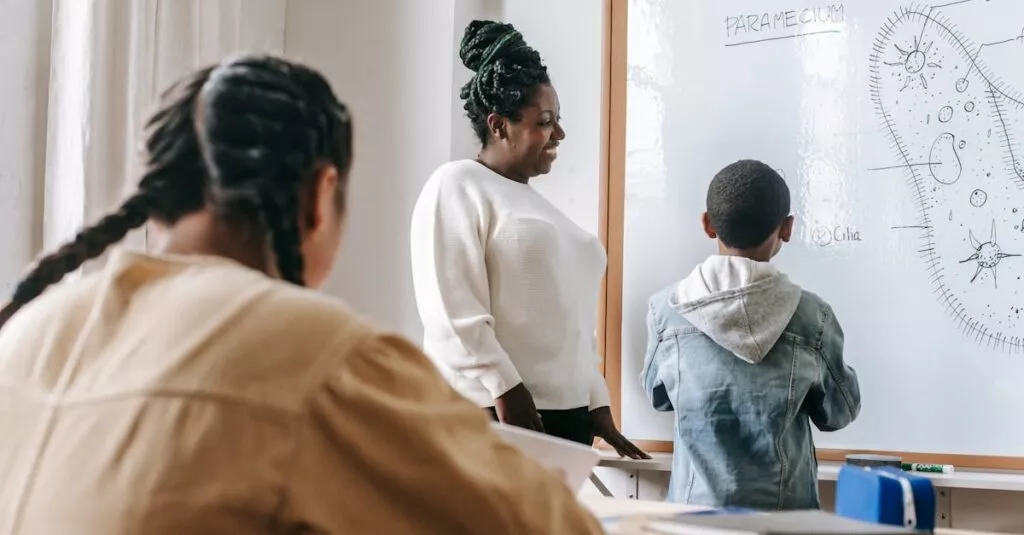Why Balance is Key in Early Education
In our high-tech world, finding the equilibrium between AI and human interaction in early education is essential. The allure of AI is powerful. It promises personalized learning, far beyond human capabilities. Yet, real-life human touch is irreplaceable in fostering a child’s emotional and social skills. As exciting as smart devices are, they can’t offer the warmth and understanding that humans can. We need both AI and human elements to nurture well-rounded, emotionally intelligent kids.
 Balance is the key:
Balance is the key:
- AI promises personalized learning
- Human touch fosters emotional and social skills
- We need both AI and human elements for well-rounded development
AI as a Helper, Not a Replacer
Think of AI as a great teaching assistant, not the head teacher. AI can automate repetitive tasks, providing more individualized learning experiences. However, it lacks the empathy and creativity of an actual classroom teacher.
A story: my son’s robot tutor rocks at math drills but doesn’t share his excitement over drawing sea monsters. That’s where his teacher steps in, encouraging creativity and providing emotional support.
AI and humans working together is the dream team we need.

Crafting Emotional Connections
Children thrive on emotional connections, and no gadget can replace that. Picture a child’s delight when a teacher praises their artwork or comforts them when they’re sad. AI can provide knowledge, but humans provide emotional security. Don’t let screens become a nanny. Instead, be part of your child’s educational journey. Laugh together, explore together, and cherish those irreplaceable moments of bonding.

Summary: Emotional connections are essential for a child’s growth and cannot be replaced by technology. Parents and educators play a vital role in providing emotional security and fostering meaningful relationships with children.
Practical Tips for Parents
So, how can you strike this balance at home? First, limit screen time; it’s all about quality, not quantity. Integrate AI tools that complement your child’s learning style, but be present during their screen time. After an AI session, discuss what they learned—this reinforces understanding and creates bonding opportunities. Set screen-free zones, like the dinner table, to cultivate face-to-face conversations. Balance is about moderation and intention.
Join the Conversation
What are your thoughts on this balance between AI and human interaction in early education? Share your experiences, funny stories, or even your frustrations. You’re not alone in this journey. Let’s build a supportive community where we share tips, failings, and triumphs.
Leave a comment below and join the conversation. We’re all learning together, and your insights might just help another parent struggling with this balance.

Related Posts:
- AI’s Impact on Future Job Market: Prepare Your Child
- AI vs Human Teachers in Education
- AI vs. Human Tutors: Children’s Learning
- Preschool Learning Revolution: ChatGPT
- Machine Learning in Early Childhood Education
